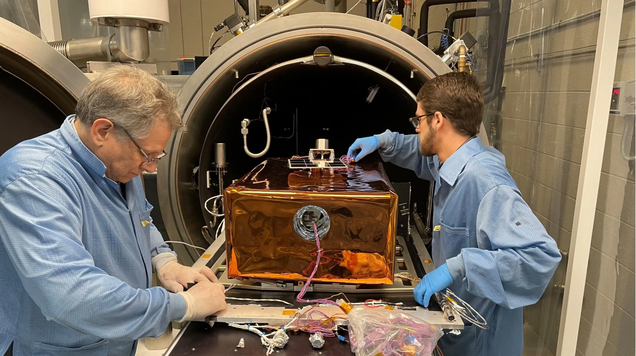
Game designer Elizabeth Hargrave helped jumpstart a tabletop revolution with Wingspan, an environmental board game about creating habitats for birds. Her upcoming release, Mariposas, has players guiding monarch butterflies on their migration. But there’s something unsettling lurking beneath the table.
“It’s easy to overlook butterflies and to just think, like, they’re always there. We see them every summer. But I personally have noticed seeing fewer monarchs over the last several summers,” Hargrave told io9.
Monarch butterflies are just one of the many victims of climate change. Over the past two decades, the monarch population has diminished by 90 percent—largely thanks to overpopulation, habitat desolation, and temperature changes. Mariposas doesn’t integrate human-created habitat loss or other climate change concerns into the game—though Hargrave said the rulebook includes an information sheet about monarch population threats—but it’s an unavoidable truth while playing it. These butterflies that you’re helping keep alive…might already be dead.
“You don’t want to give people more anxiety. When they’re playing a game, their first priority is to have fun.”
The surge in tabletop board gaming has brought a new sub-genre to the forefront: ecology gaming. Board games about nature, conservation, and the environment have surged in popularity in recent years, including releases like Parks, Photosynthesis, Succulent, and Hargrave’s Wingspan. This is something board game researcher and Your Move co-author Joan Moriarity attributed to the rise in casual hobby games, modern production techniques allowing for more niche games, as well as the increased attention being paid to consumers that aren’t just white men.
“If you want to attract a broader audience, you need to find a broader range of subjects. And ecology is something that’s very much on people’s minds these days, for obvious reasons,” Moriarity told io9.
Given how well board games bring people together and can even get them thinking about social issues (like with Space Cats Fight Fascism), it seems like tackling the realities of the climate crisis would be a no-brainer. There have been a few exceptions, like 2012’s CO2 and the upcoming card game Tipping Point, but climate change as a topic is still largely absent, even though it’s one of the biggest issues of our time. Sea levels are rising, bees are being wiped out, and every warm sunny day in winter comes with a warning of everything else it means.
When asked about why there’s a lack of climate change board games, Hargrave noted she’d even been asked to do one—but, like many other designers, was hesitant about tackling the subject.
“So many people have been like, ‘Oh, don’t you want to do a game about climate change, focusing specifically on the climate change?’ I’ve been wary of going there… [because] you don’t want to give people more anxiety. When they’re playing a game, their first priority is to have fun,” Hargrave said.
This was something Moriarity disagreed with, the notion that games have to be “fun” to be worth playing because sharing a powerful if not challenging experience can be just as valuable as pure entertainment. Plus, films and video games aren’t held to the same standard, like Schindler’s List and Kentucky Route Zero (which tackled class conflict and the socio-economic impact of global warming). But she said climate change as a topic isn’t something that’s easily handled in board games, for two major reasons.
The first is that the problem is not something you can easily unpack in a 60 to 90-minute game. Climate change not only impacts our physical, social, political, and economic way of life, but it’s also a problem that’s continually evolving in ways we cannot predict (just take a look at one week of Earther’s climate change coverage). Tabletop roleplaying games tend to have more flexibility to address complex subjects and themes since they’re typically run as ongoing campaigns, but board games have time limits. Designers risk oversimplifying a complex problem by dumbing it down into a single gaming session—or even worse, giving misinformation about what’s going on and what steps could be done to address it.
This is why board games tend to turn to allegory. It’s a common tool in speculative fiction, one that can help examine complex social problems (though it runs the risk of laying a smokescreen over real-world issues, like when elves or robots represent systemic racism). Zombie games like Dead of Winter are sometimes considered allegorical representations of climate change. But Terraforming Mars—a speculative game that takes place on another planet with a different ecosystem and its own ecological needs—is one of the most popular climate-based board games on the market. Players have to make the planet hotter in order to help it survive, directly contrasting with the problems on Earth.
According to Moriarity, having the game be more hypothetical makes it easier for players to strategize large-scale solutions. However, that might not be the only reason players are drawn to the game. “There’s, I think, a very real sense of despair that we’ve gotten to the point where it’s too late. We’re done,” she said. “The idea of saying: ‘Okay, well, we’ve screwed the pooch on this planet’s environment, we’re going have to go somewhere else.’”
She also discussed the moral challenge of creating games like this. Board games about social issues are hard to pull off because it’s easy to have them take a “didactic, condescending approach” to problems that are far more complicated, she told us. Addressing climate change is a moral imperative, but one with a lot of layers—like how many people realize it’s happening but are still unwilling to pay for real solutions. If game designers have a limited amount of time to get a message across, they run the risk of pushing that moral imperative instead of letting players figure it out on their own.
For example, Moriarity said, if you give players the option to drill for oil to make money or enact a greener plan that will save lives, those aren’t two sides of the same coin. It’s clear what’s the right choice and what’s the wrong one. This goes back to the Victorian-era trend of morality board games and leaves players feeling out of control.
“Ecology is an infinite game. Board games—and, for the most part, roleplaying games—are finite games. By having a possibility that you can declare victory when you get to the end, right away, you are distracting the truth of these complicated subjects,” she said. “You cannot simply wag your finger at players and expect that to do the work for you.” But there are games that are trying to breach the divide.
Ryan Smith and Bradford Gyselman are the creators behind Tipping Point, which was recently funded on Kickstarter. The semi-cooperative card game puts players in charge of their own cities which are dealing with weather issues and rising carbon dioxide levels caused by climate change. Players work together (or independently) to keep their cities and people alive, but sometimes, hard decisions have to be made. It’s like the trolley problem thought experiment: What will do the least harm now, and what impact will it have later? In a sense, climate change is the ultimate trolley problem, about prioritizing this generation versus helping future ones.
“Part of it is generally just giving people a little bit more perspective on all the moving parts that go with [city management]. So, it’s not just about, you know, ‘If I ran a city, I would end all this type of resource extraction and do all of these things,’” Gyselman said. “It’s oversimplified, and in some ways it is a game at the end of the day. But it’s trying to show people that the mechanics behind that are more nuanced. That there’s more that goes into those decisions than just sort of making those changes overnight.”
This runs the risk of hitting on Moriarity’s concern of creating moral absolutes, but Smith, who’s also a climatologist, said their game is about mitigating the ongoing issue, not resolving it. Because, like it or not, climate change isn’t something that can be fixed with the roll of a dice.
“The game’s titled Tipping Point, right? Some might say we’ve already crossed that tipping point, that the amount of climate change that has accumulated is definitely at a point where we have no choice. Climate change is happening now, for good, and we need to start getting ready for that. At the same time, we really have to avoid those worst-case impacts,” Smith said.
Even if climate change isn’t a topic that’s embedded in most ecology board games, the increase in games about the environment is having its own impact. According to Moriarity, they’re getting people talking about the environment—an important subject, given how research from Yale indicates people aren’t talking about climate change nearly as much as they are thinking about it. This is something Hargrave herself has noticed with Wingspan, as more folks have found themselves falling in love with birdwatching as a result of playing her game—and with it comes an increased likelihood that the health, homes, and well-being of those birds will be on their minds too.
“It’s so gratifying to me when people are, like, ‘I’ve been playing Wingspan and now I’ve noticed that I’m noticing the birds more when I’m outside.’ Even just the act of noticing is the first step toward caring and shaping other behaviors,” Hargrave said. “I think playing a game about something in nature connects you to that thing in nature that maybe you hadn’t really thought about before. By having strengthened that connection, you’re more likely to want to think more about the conservation issues that are related to that piece of nature.”
This might increase hope for the future but the sad truth is that, sometimes, connections aren’t enough. Wingspan might get more people thinking about birds, which is great, but it isn’t changing the fact that almost two-thirds of America’s birds—many of which are featured in Hargrave’s game—are reportedly at risk of extinction thanks to climate change. The little steps are helping, but we need bigger steps to make real change. This could start by encouraging more games like Tipping Point to turn the conversation to actual conservation while recognizing that it’s only a step, not a platform.
Games will never be able to get into the complexities of climate change politics and policies—but if it can be a spark that ignites interest, it won’t just be thinking about birds, it’ll be thinking about how to save them. Games get us talking about these issues at the table, which is step one, and that can lead to the next step of working with likeminded people to exact lasting change. Because, like it or not, change is coming.
“Climate change is the crisis of our times,” Smith said. “When you look at the amount of climate change that has accumulated, if that’s the right sort of way to say it, I guess, we’re really just at the beginning of this.”
For more, make sure you’re following us on our Instagram @io9dotcom.
Source: gizmodo.com








